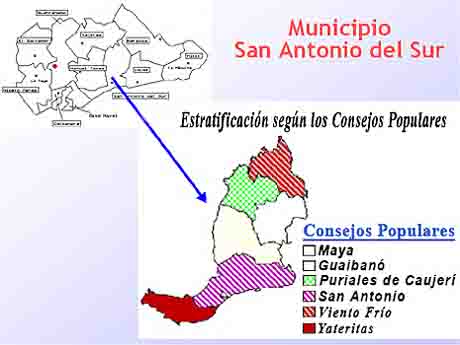4.4 Validity of the Cross Altars

The celebration of the Altar of the Cross or the May Cross is of Spanish religious origin and is celebrated throughout the Christian communities. Brought to us by the Spanish, it was celebrated in the Cuban archipelago during the 17th century, a period in which it gained great notoriety.
Today, within Cuban cultural circles, specifically in San Antonio del Sur, we find the Altares de Cruz de Mayo (Cross of May Altars) still in use. María Eduviges Martínez was the pioneer of altars in this town.
For the health of a sick person, to ask for the gift of rain, for harvests, among other intentions, or for thanksgiving in difficult times, are some of the reasons that give rise to the creation of Cross Altars.
It has been proven that the image of the Virgin of Charity of Cobre, from its earliest days in the region for as long as is known, has been present on the altars of the Cross of San Antonio del Sur. On May 3rd, a procession was held from Oquendo to the Cross, located in Paragual, with the image of the Virgin.
The symbolic Cross Altars are now held during the Municipal Culture Day as part of our traditions. Many locals maintain the tradition of celebrating these altars. Through them, they worship the patron saint of Cuba, the Virgin of Charity of Cobre. This festival is celebrated primarily in the rural area north of the municipality of San Antonio del Sur.








